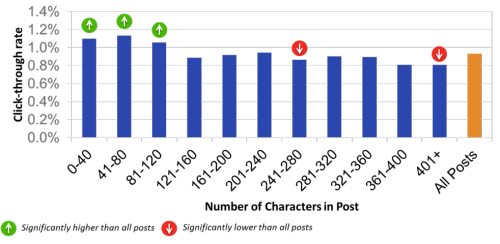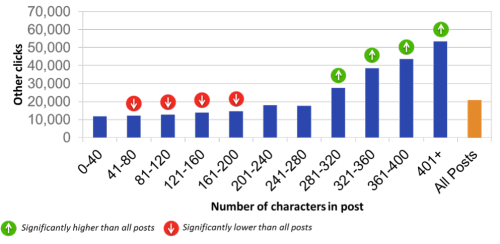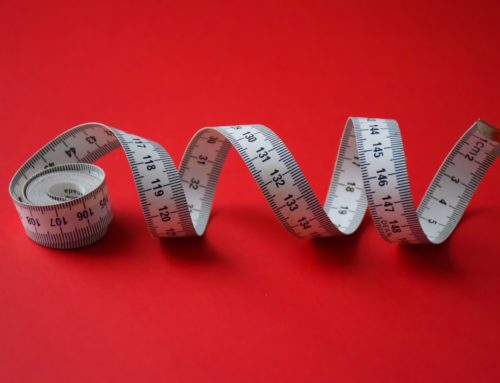
The organization pulled all its link posts from the last six months — over 3,000 in all — and analyzed post performance in groups of 40-character increments.
On the first look, NPR found that shorter posts — about 40 characters — DID perform better when measured by click-through rate. NPR’s analysis matches up with Buffer and SumAll’s 2014 study on the optimal length for social media updates.

Source: https://socialmediadesk.tumblr.com/post/132086875461/analyzing-facebook-lead-in-text-length
But NPR didn’t stop at the first look. Since NPR’s mission is to “…create a more informed public — one challenged and invigorated by a deeper understanding and appreciation of events, ideas and cultures,” it dove deeper into the data to see if there was value to their mission in using longer Facebook posts. NPR looked at the “other clicks” metric in Facebook, which includes clicks on the “see more” label in longer posts and on the title.
Yes, there is value in longer posts — people are reading them AND clicking through….when the story is compelling enough.

Source: https://socialmediadesk.tumblr.com/post/132086875461/analyzing-facebook-lead-in-text-length
And NPR came up with a new metric to find that value. Click through to NPR digital metrics analyst’s Dan Frohlich’s blog post to see how he did it.
For NPR, the 40-200 character space is the danger zone — posts with those character lengths perform significantly LOWER than all posts.
Key takeaways for everyone else?
- Write more short posts (40-80 characters), but don’t make EVERY post short
- Try a super long post to see how it performs — don’t shy away from the story-telling opportunities that longer posts can bring

![12 Things You Can Stop Doing Right Now [Infographic]](https://www.nonprofitmarketingguide.com/wp-content/uploads/2025/01/Stop-Doing-2025-Info-hung-up-500x383.png)



